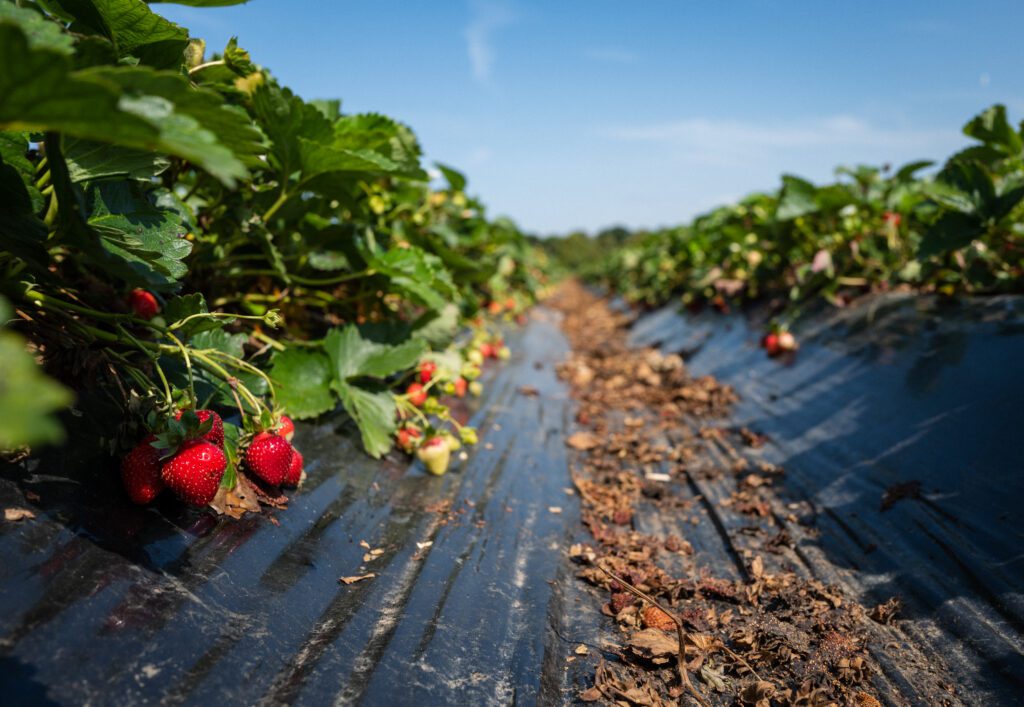High Demand, Cool Temps Have Strawberry Growers Smiling This Season
by RYAN MILEJCZAK
It’s February, and that means that the 2024 Florida strawberry season is in full swing. Florida’s dominance of the winter strawberry market continues this year, with this year’s colder weather having some unique (and delicious) effects on this year’s crop. We talked with some strawberry growers to get their perspectives and learn how this year’s strawberry season is shaping up.
Colder Weathers Brings Sweeter Strawberries
One of the most noteworthy aspects of this year’s strawberry season has been the colder temperatures the state has been experiencing. Those colder temps actually have a great effect on the strawberry crop — sweeter berries!

“It has been an incredible Florida strawberry season in terms of flavor and quality,” explains Kenneth Parker, Executive Director of the Florida Strawberry Growers Association. “I would suggest that the cooler temperatures have definitely been really good for the size, color, and the flavor of this year’s strawberries,”
Nick Wishnatzki of Wish Farms agrees that the weather has been good for quality but also notes some of the challenges the colder, wetter weather has brought.
“While the cold weather helps with flavor, it has a negative effect by holding the crop back and slowing down volume,” Wishnatzki says. “Rain also creates challenges with disease pressure and quality issues, so our farm and QA teams have to work overtime to make sure only the best fruit gets harvested and packed.”
Kristen Hitchcock of Parkesdale Farms echoes these sentiments.
“It’s slowed down production some,” notes Hitchcock. “Thankfully, our production started on a good note before the cold spells came in, so even though it has slowed us down some, they are coming back. We were a little bit worried about the rain, but our main farmer Matt Parke has been able to handle all those issues, so it hasn’t been too bad. Plus, because of the cold weather, the berri
es have been extremely sweet. Everyone that I know that has purchased our berries has said, ‘Gosh, the berries are so much sweeter this year!’ ”
Imports a Constant, but Demand Remains High
One of the biggest challenges for Florida growers is the flood of imported berries from other countries, particularly Mexico. While this has placed some downward pressure on strawberry prices, domestic fruit is still performing well.
“The impact of imported fruit on our market has been significant,” notes Payton Astin of Astin Farms. “However, Florida-grown produce has maintained a strong presence.”
Parker is also confident about the demand for Florida strawberries, noting that demand is so high that meeting it has actually been a challenge.
“Demand has been strong for a number of years now,” he says. “I think consumers are making healthier choices. They’re wanting to provide fresh fruits and vegetables for their kids and their families. We see that in our increase in acreage. We’ve increased in acreage because we’re trying to meet demand, and demand is still outpacing supply.”
Florida Brilliance and other UF/IFAS Varieties Dominate Planting
Over the years, the University of Florida’s Institute of Food and Agricultural Sciences (UF/IFAS) has created a number of varieties specially adapted to the Florida climate. These include varieties such as Florida Brilliance and Florida Pearl, and are among the most planted varieties by growers.
“This season, we are harvesting a diverse range of berries,” Astin says. “These include Florida Brilliance, Sensation, and the recently added Medallion from the UF/IFAS program.”
Every grower we spoke to has been planting Florida Brilliance, which is the most popular variety in the state. A number of growers are also planting white strawberry varieties — commonly marketed as pineberries — including Winterfrost White and Florida Pearl.
Positive Outlook
While this season hasn’t been without its challenges, overall growers are very positive about the rest of the season.
“We are anticipating a big crop, and the fields are in good shape,” notes Wishnatzki. “We expect to steadily increase with peak production occurring in the last week of February and the first three weeks of March.”
Astin agrees wholeheartedly with that positivity.
“We have a great setup—our plants are healthy, our labor force is outstanding, and we expect high production moving forward. Yes, the colder weather has delayed crop production, however, as temperatures warm up, the crop will advance rapidly.”
Hitchcock chimes in with the same optimism as her fellow growers.
“I think it’s going to be a really good season. We have had, for the past four years, just great seasons. Crops look good, plants look good. We have the regular problems with Florida weather and the rain, some diseases that are out there, but it’s not too bad.”

